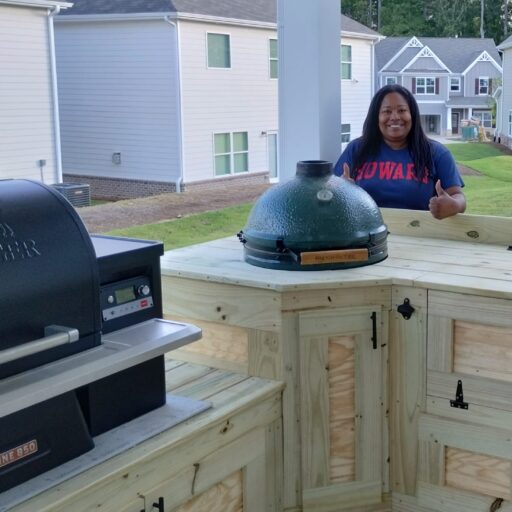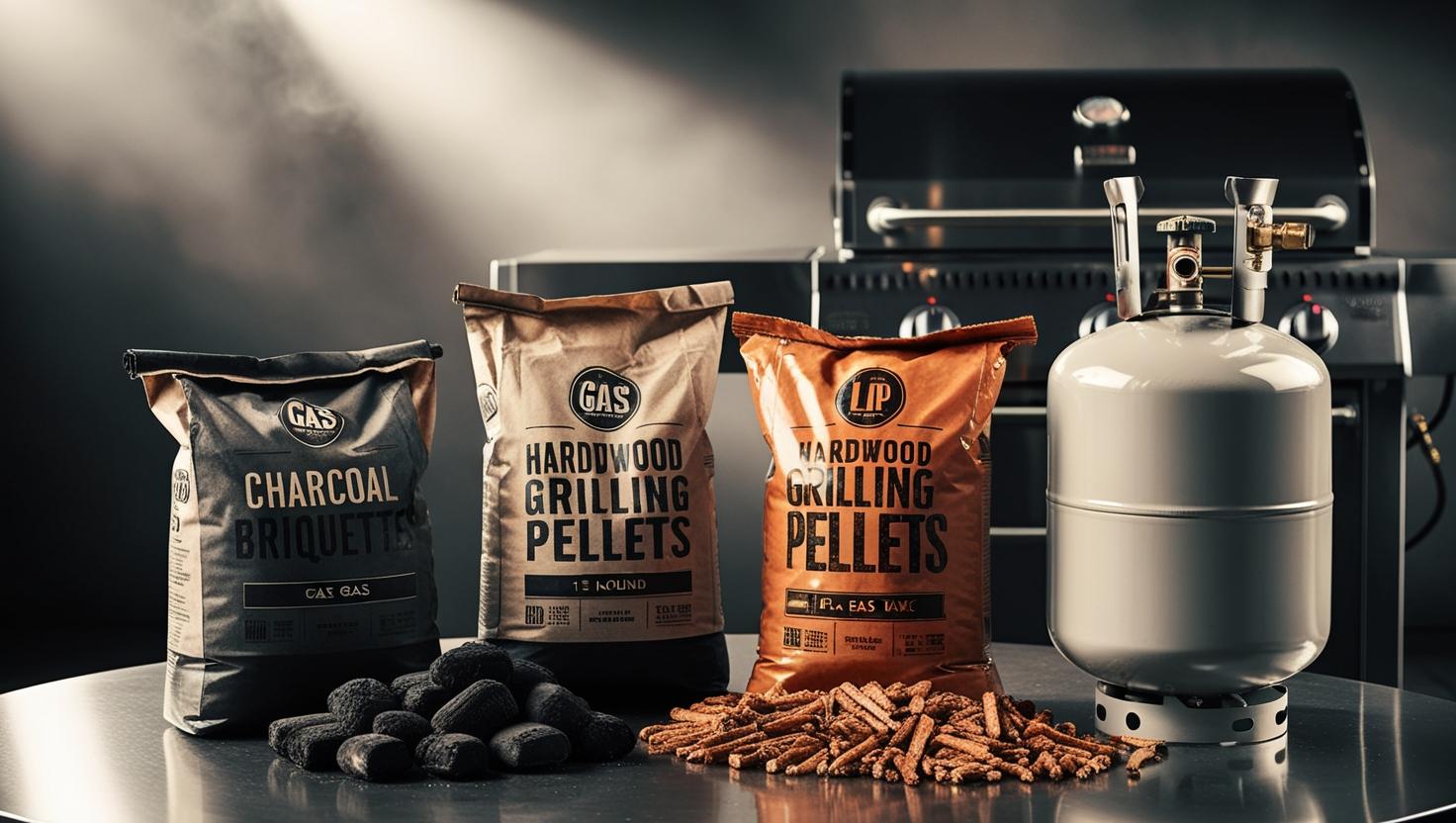When it comes to grilling, the choice of heat source plays a significant role in the flavor, texture, and experience of cooking outdoors. While charcoal, pellets, and gas are the most popular, there are other heat sources used by grilling enthusiasts to elevate their outdoor cooking game. Whether you’re an avid griller or someone just getting into the world of outdoor cooking, understanding the nuances of these different heat sources can open up new possibilities for your grilling adventures.
In this post, we’ll take a general look at the various heat sources used in grilling and cooking out. We’ll discuss how each one works, what it brings to the table (pun intended!), and how it can affect your cooking style.
Charcoal: The Traditional Flavor Master
Charcoal grilling is a classic method that has been around for centuries, and for good reason. Whether you’re using traditional lump charcoal or charcoal briquettes, this heat source has a rich, smoky profile that many grill enthusiasts swear by.
How Charcoal Works: Charcoal grilling involves igniting lumps of charcoal or briquettes, which burn slowly and produce high, intense heat. As the charcoal burns, it creates a combination of radiant heat and smoke, which imparts that signature smoky flavor to the food. Lump charcoal tends to burn hotter and faster than briquettes, while briquettes are often more consistent and burn for longer periods.
What Charcoal Brings to the Grill:
- Flavor: Charcoal grilling is often the go-to for people seeking that deep, smoky flavor in their meats. It creates a unique charred crust and infuses the food with a rich, woodsy taste.
- High Heat: Charcoal can generate high, intense heat, making it perfect for searing steaks and burgers.
- Traditional Cooking: There’s something primal about cooking over charcoal. The sound of the crackling fire and the aroma of the burning wood or charcoal often evoke a sense of nostalgia.
Considerations: While charcoal grills offer fantastic flavor, they require more hands-on involvement. Getting the coals to the right temperature can take time, and managing the heat is an art form. Plus, they tend to take longer to heat up than gas grills and can be messier to clean afterward.
Pellet Grills: The Wood-Smoking Convenience
Pellet grills are a modern innovation that combines the best of both worlds: the flavor of wood and the convenience of gas. These grills use compressed wood pellets as fuel, which are fed into a fire pot using an auger. A built-in fan then circulates the heat and smoke, creating consistent cooking conditions.
How Pellet Grills Work: Pellet grills operate with an electric system that controls the temperature with great precision. The wood pellets are burned at the right temperature, and the heat circulates around the food, giving it a wood-smoked flavor. Pellet grills can function like a smoker for low and slow cooking, or they can crank up the heat to sear steaks, providing versatility for all types of grilling.
What Pellet Grills Bring to the Grill:
- Wood Flavor: The pellets themselves come in various wood types (oak, hickory, apple, cherry, etc.), so you can customize the flavor profile of your food with ease.
- Consistent Temperature: Pellet grills offer the convenience of precise temperature control, which makes it easy to cook without constantly adjusting the heat.
- Convenience: For those who love the flavor of wood but don’t want to tend to a fire or manage coals, pellet grills provide an excellent solution. They’re easy to start, and their automatic feed system means you can focus on cooking rather than worrying about the fire.
Considerations: Pellet grills are powered by electricity, so they may not be as portable as gas or charcoal grills. They also require wood pellets, which need to be stored properly to prevent moisture and ensure optimal burning. Additionally, while they offer a wonderful wood-smoked flavor, some purists might argue that they don’t quite replicate the intensity of flavor produced by traditional wood-burning grills.
Gas Grills: Quick, Clean, and Convenient
Gas grills are perhaps the most common type of grill found in backyards today. They use either propane or natural gas as fuel, providing consistent heat at the turn of a knob. With the simplicity of a push-button ignition and easy-to-control heat settings, gas grills have become the go-to option for many home chefs.
How Gas Grills Work: Gas grills have burners that are powered by either propane tanks or natural gas lines. When the gas is ignited, it creates a steady flame that heats the grill grates. The heat can be adjusted with the turn of a dial, providing flexibility for different cooking styles—whether you want a high sear or low-and-slow cooking.
What Gas Grills Bring to the Grill:
- Convenience: Gas grills are incredibly easy to use. You don’t have to worry about lighting charcoal or managing the flame. Simply turn on the gas, ignite the burners, and you’re ready to cook.
- Quick Start: Gas grills heat up quickly, often within 10-15 minutes, which is great for when you’re in a rush or cooking for a crowd.
- Clean Cooking: Gas grilling is a cleaner option compared to charcoal. There’s no ash to deal with, and the cooking process is less messy.
Considerations: While gas grills are incredibly convenient, they don’t offer the same smoky flavor that charcoal or wood-burning grills provide. Many gas grill enthusiasts use wood chips in a smoker box to try to add some smokiness, but it’s not quite the same as the natural smoky flavor from charcoal or wood.
Other Heat Sources: Exploring Unique Grilling Techniques
While charcoal, pellets, and gas dominate the grilling world, there are a few more unconventional heat sources worth mentioning. These include electric grills, wood-burning grills, and infrared grills.
Electric Grills: Electric grills are a great alternative for people who live in apartments or places where open flames are not allowed. These grills are powered by electricity and provide consistent, controllable heat. While they don’t impart the same smoky flavor as other grills, they’re an excellent option for those who prefer a no-mess, easy-to-use appliance.
Wood-Burning Grills: Wood-burning grills operate just like traditional fire pits or wood stoves. They use real wood logs to fuel the fire, providing a distinctive smoky flavor. While they offer a true wood-smoked taste, they require more attention and maintenance than other grills, as the fire needs to be managed carefully.
Infrared Grills: Infrared grills use radiant heat to cook food, providing an even, high-heat cooking environment. These grills are known for their ability to sear meat quickly while keeping it juicy inside. They’re easy to clean, and their efficiency makes them popular for people who want fast, high-heat cooking without the need for a traditional flame.
Final Thoughts: No One-Size-Fits-All
Grilling is as much about personal preference as it is about the cooking process itself. Whether you prefer the classic smoky flavor of charcoal, the convenience of gas, the versatility of pellet grills, or the innovative approach of electric and infrared options, each heat source has its own set of benefits that can match different tastes and cooking styles.
The best part about grilling is the freedom to explore and experiment with various methods to see what works best for you. Whether you’re slow-smoking a brisket, searing a steak, or grilling vegetables, the source of heat you choose will ultimately shape your cooking experience. So fire up your grill of choice and let the flavor journey begin!
What’s your favorite grilling method? Do you prefer the smoky taste of charcoal or the convenience of gas? Let me know in the comments!


Leave a Reply
You must be logged in to post a comment.